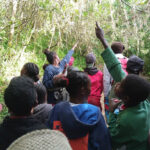The Bamboo Lemur programme was initiated in 2008 following the discovery of two groups of greater bamboo lemurs (Groups 1 and 2), each comprising around twenty individuals at the time.
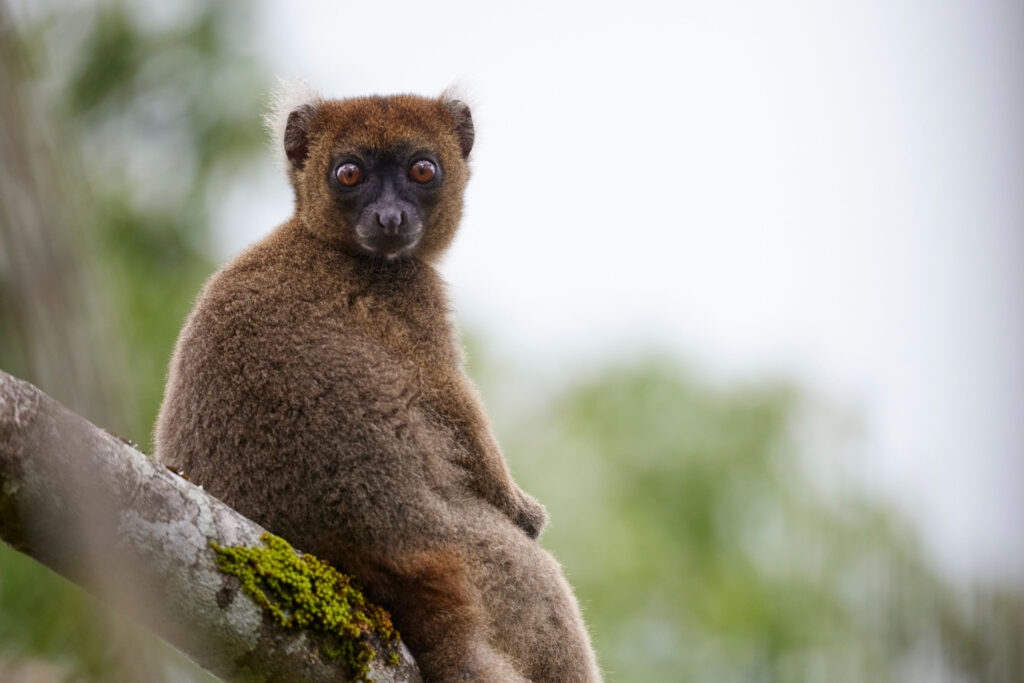
Between 2008 and 2014, the growth in the population resulted not only from the implementation of the first protection measures, but also from the discovery of five new groups.
From 2014 onwards, the year in which the exploration ceased, the increase in the population is exclusively attributable to the protection measures in place.
It has remained constant since then, except for 2022, when around fifty individuals were not found following the passage of two high-intensity cyclones.
Since 2018, the number of births has generally been around 70 per year, with occasional peaks of over 80. These figures are exceptional, especially when you consider that this species was on the brink of extinction some fifteen years ago.
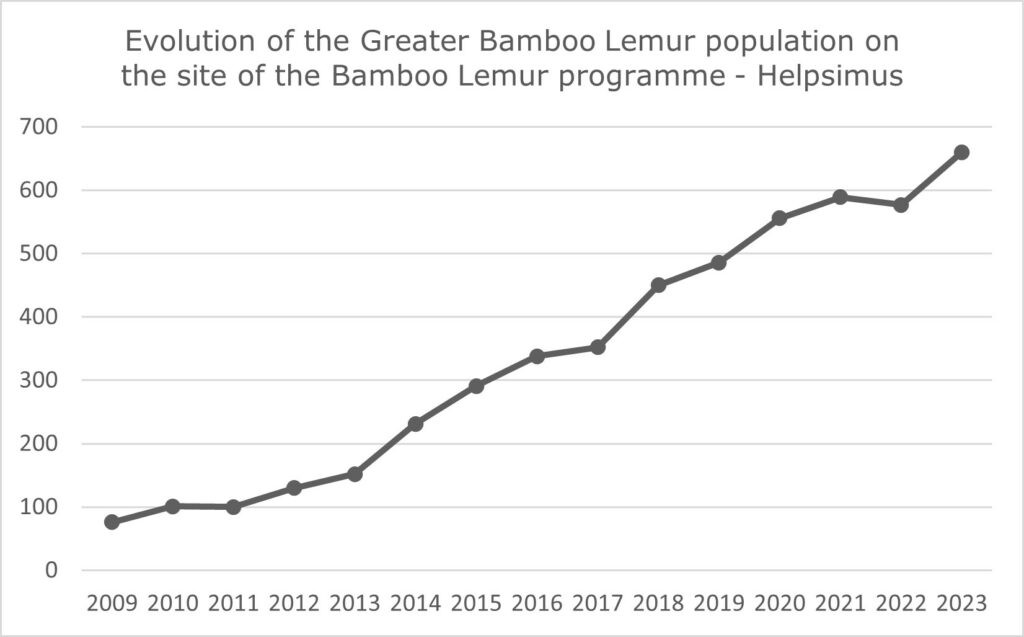
Groups 1 and 2 stand out for their exceptional growth, even though they live in the part of our conservation area most impacted by human activity. This area, although heavily anthropised, has an abundance of bamboo, which is the main source of food for the greater bamboo lemurs. Group 2 also proved to be the most prolific within the population. It has occasionally exceeded 80 individuals, with record numbers of births (up to 15 babies recorded in 2018).
These 2 groups also underwent several fissions, leading to the formation of Groups 3, 1′ and 1” for Group 1, and Groups 2′, 2” and 4 for Group 2. Subsequently, Groups 1” and 4 also split, giving rise to Groups 1”’ and 4′.
The fissions within the groups had various origins. Some fissions were directly linked to human activities, in particular major clearings in the lemurs’ territory, as well as the hunting of tenrecs by villagers with the help of dogs. Others were of natural origin, occurring when the groups reached a size generally exceeding 60 to 80 individuals. Finally, some fissions were the consequence of intense climatic factors, notably the two cyclones that occurred in 2022. These cyclones caused considerable damage, destroying up to 40% of the bamboo forests. This destruction resulted in a significant reduction in the food resources of the greater bamboo lemurs, leading to the dispersal of the animals.
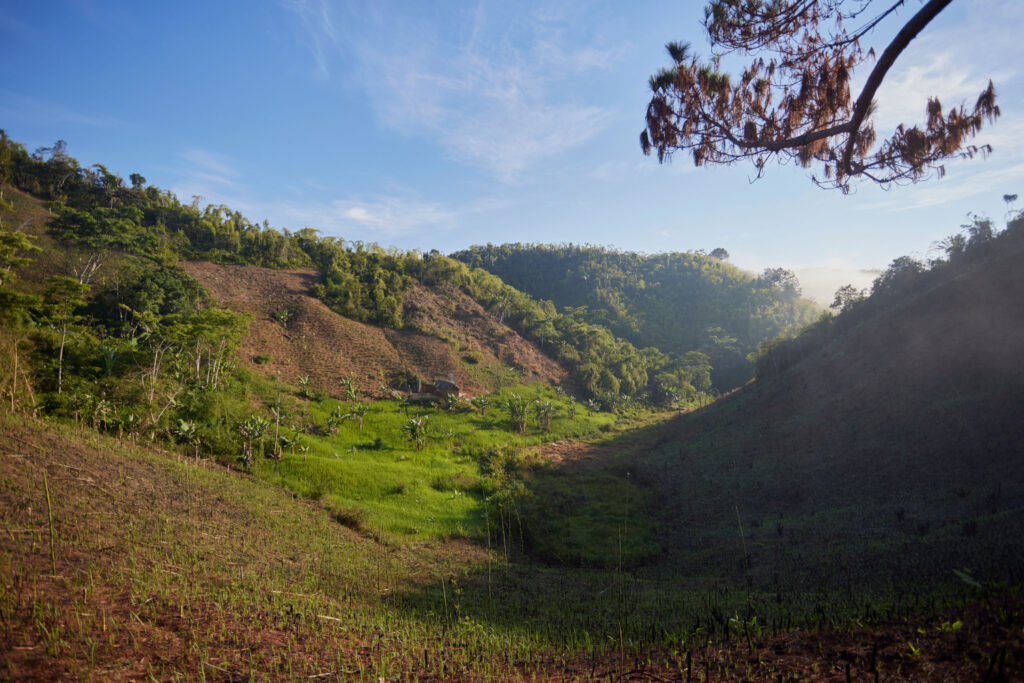
The population of greater bamboo lemurs directly protected by Helpsimus has now exceeded 650 individuals, divided into 21 groups. These groups vary in size from just under 30 to almost 80 individuals.
The 21 groups are monitored by a team of 30 local guides, whose job it is to:
– monitor the groups: locate the animals and delimit their territory using GPS, carry out regular counts to update the inventories, report threats such as the presence of dogs or traps, and report attacks by the greater bamboo lemurs on crops.
– repel the greater bamboo lemurs from cultivated areas.
– help the scientific teams.
– take part in the inventories and the environmental education programme.
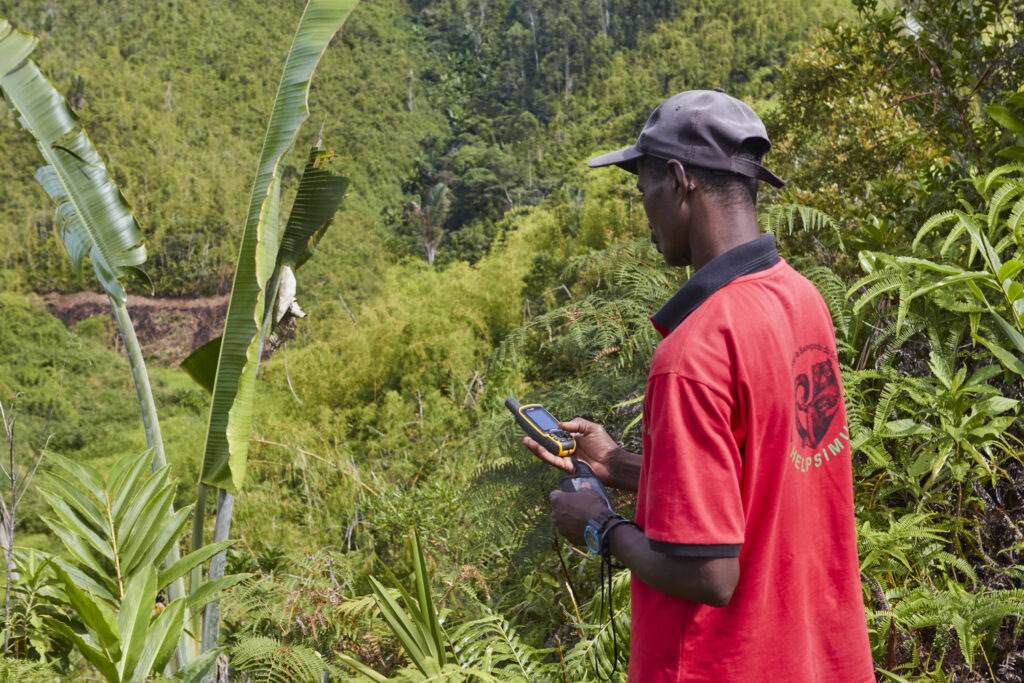
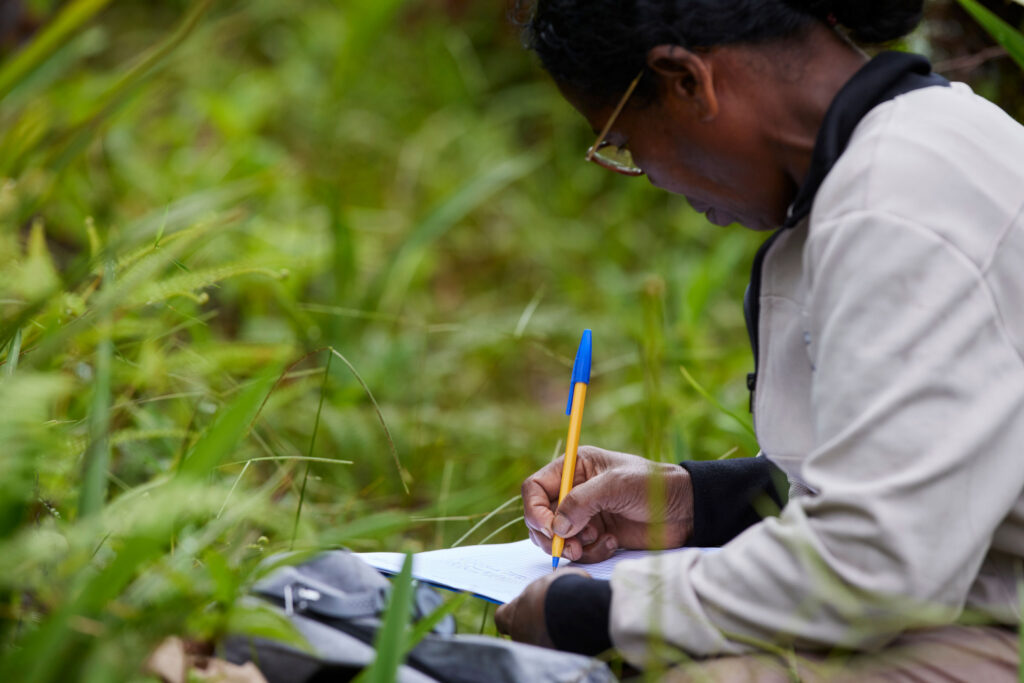
In addition to the 21 regularly monitored groups, three new groups formed after the cyclones of 2022, named 8′, 8” and 10, are not regularly monitored. Together, these groups total around thirty individuals.
The Bamboo Lemur programme site is now home to the largest wild population of greater bamboo lemurs. This success is attributable to our holistic approach to conservation, which aims to fight poverty among local populations, enabling them to protect their biodiversity in a sustainable way.
The greater bamboo lemur is currently the only lemur species whose populations are increasing. From less than 100 specimens in 2008, it is likely that the population now exceeds 1,500 individuals in Madagascar. However, despite this growth, the balance remains fragile, as demonstrated in 2022 with the cyclones. The greater bamboo lemur population has nevertheless shown remarkable resilience in the face of these events, thanks in part to the measures put in place to limit the pressure on its habitat.





